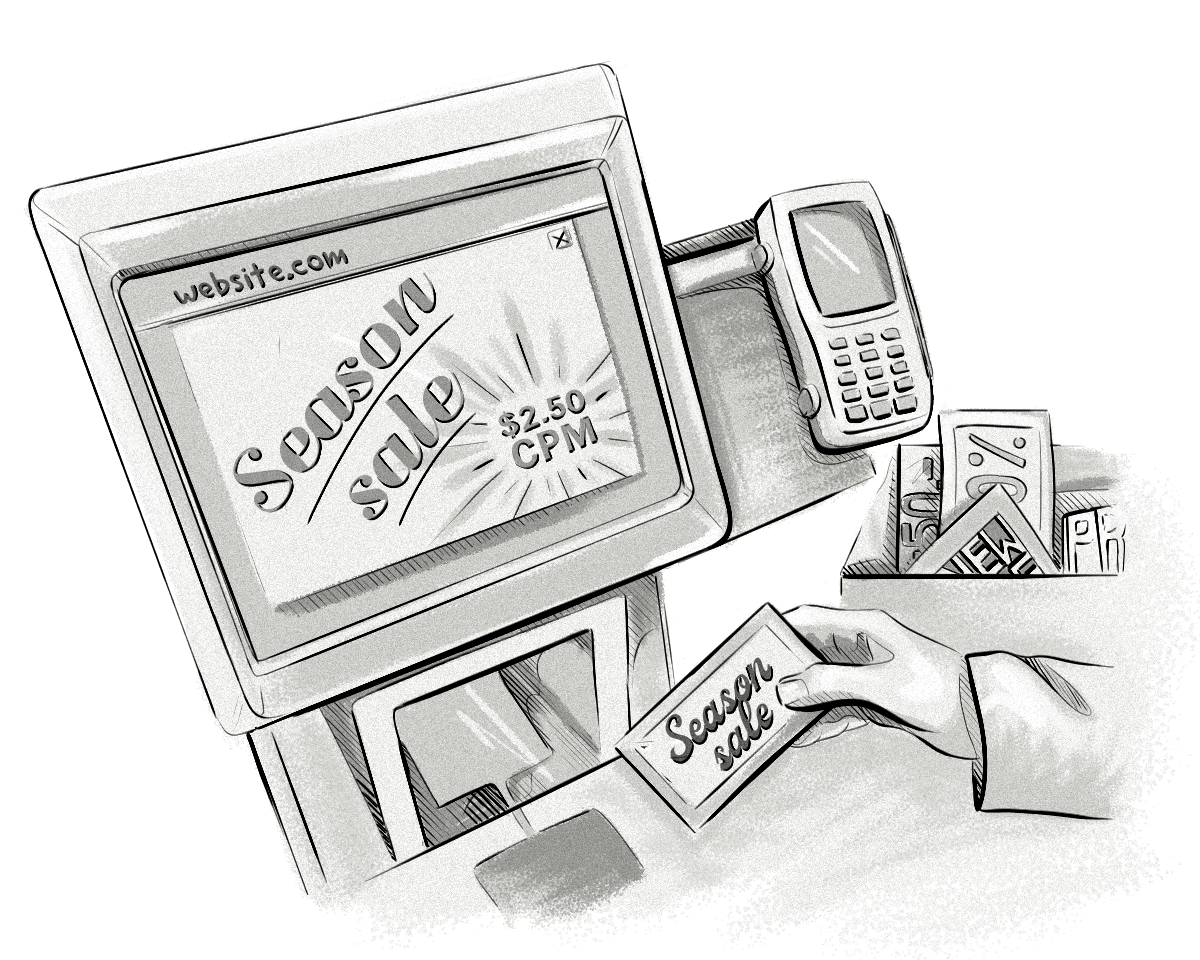Everyone in the digital advertising world is familiar with Facebook Ads and Google Ads. Advertisers, ad agencies and even publishers use these platforms to create, run and manage ad campaigns.
But some people might not know that these platforms are examples of self-serve advertising platforms.
In this post, we explain what a self-serve ad platform is, how it differs from managed ad campaigns, how it works, what the key features are, and how to build one.
Key Points
- A self-serve advertising platform is an AdTech platform that allows media buyers to create, run and manage advertising campaigns themselves, rather than having the campaigns created for them, e.g. by the publisher’s or AdTech company’s AdOps team.
- A self-serve ad platform integrates with a different AdTech platform, e.g. DSP or SSP, and data platforms such as a DMP or CDP.
- Self-serve ad platforms can also be used to run campaigns directly on a publisher’s digital properties (e.g. website), typically via an ad server.
- Once a user has created a campaign in the self-serve ad platform, this information is then passed on to the AdTech and data platforms, typically via an application programming interface (API).
- AdTech companies and ad agencies can build self-serve ad platforms to allow their clients to create their own ad campaigns.
- Publishers can build a self-serve ad platform to allow advertisers and ad agencies to run campaigns on their digital properties (e.g. websites and video-streaming services).
- The key features of a self-serve ad platform include a user interface (UI), campaign management, reporting dashboard, user management, and integrations with other AdTech platforms and tools.
What Is a Self-Serve Advertising Platform?
A self-serve advertising platform, aka self-service advertising platform, is a piece of advertising technology (AdTech) that allows media buyers, e.g. advertisers and ad agencies, to create, run and manage advertising campaigns themselves, rather than having the campaigns created for them, for example, by the publisher’s or AdTech company’s AdOps team.
What’s the Difference Between Self-Serve and Managed Ad Campaigns?
Most demand-side platform (DSP) vendors will offer two main ways to run campaigns — self-serve or managed services. Self-self ad campaigns mean that the advertiser or ad agency can set up the ad campaign themselves, whereas with managed services, the AdOps or advertising sales team at the DSP would set up and run the ad campaign for the advertiser or agency.
We Can Help You Build a Self-Serve Ad Platform
Our AdTech development teams can work with you to design, build, and maintain a custom-built self-serve ad platform for any programmatic advertising channel.
How Does a Self-Serve Advertising Platform Work?
A self-serve ad platform integrates with different AdTech platforms, e.g. DSP or SSP, and data platforms such as a DMP or CDP. Self-serve ad platforms can also be used to run campaigns directly on a publisher’s digital properties (e.g. website and video-streaming service), typically via an ad server.
Once a user has created a campaign in the self-serve ad platform, this information is then passed on to the AdTech and data platforms, typically via an application programming interface (API). Any changes made in the self-serve ad platform are also passed on to the AdTech and data platforms.
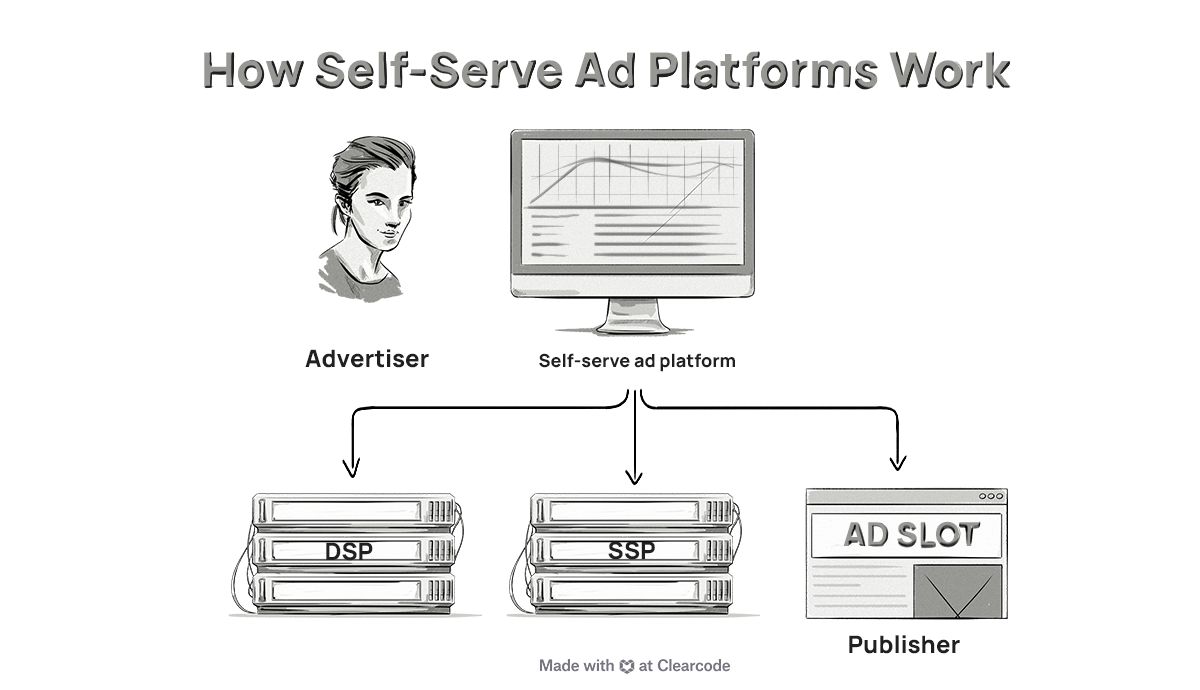
Which Types of Companies Can Build Self-Serve Advertising Platforms?
Self-serve ad platforms can be used by different types of businesses, such as:
AdTech Platforms
AdTech platforms, such as demand-side platforms (DSPs), can build self-serve ad platforms to allow their clients to create ad campaigns themselves.
The benefit here is that the AdTech platform can onboard more clients and free up their AdOps team’s time, allowing them to spend their time on more valuable managed-service ad campaigns.
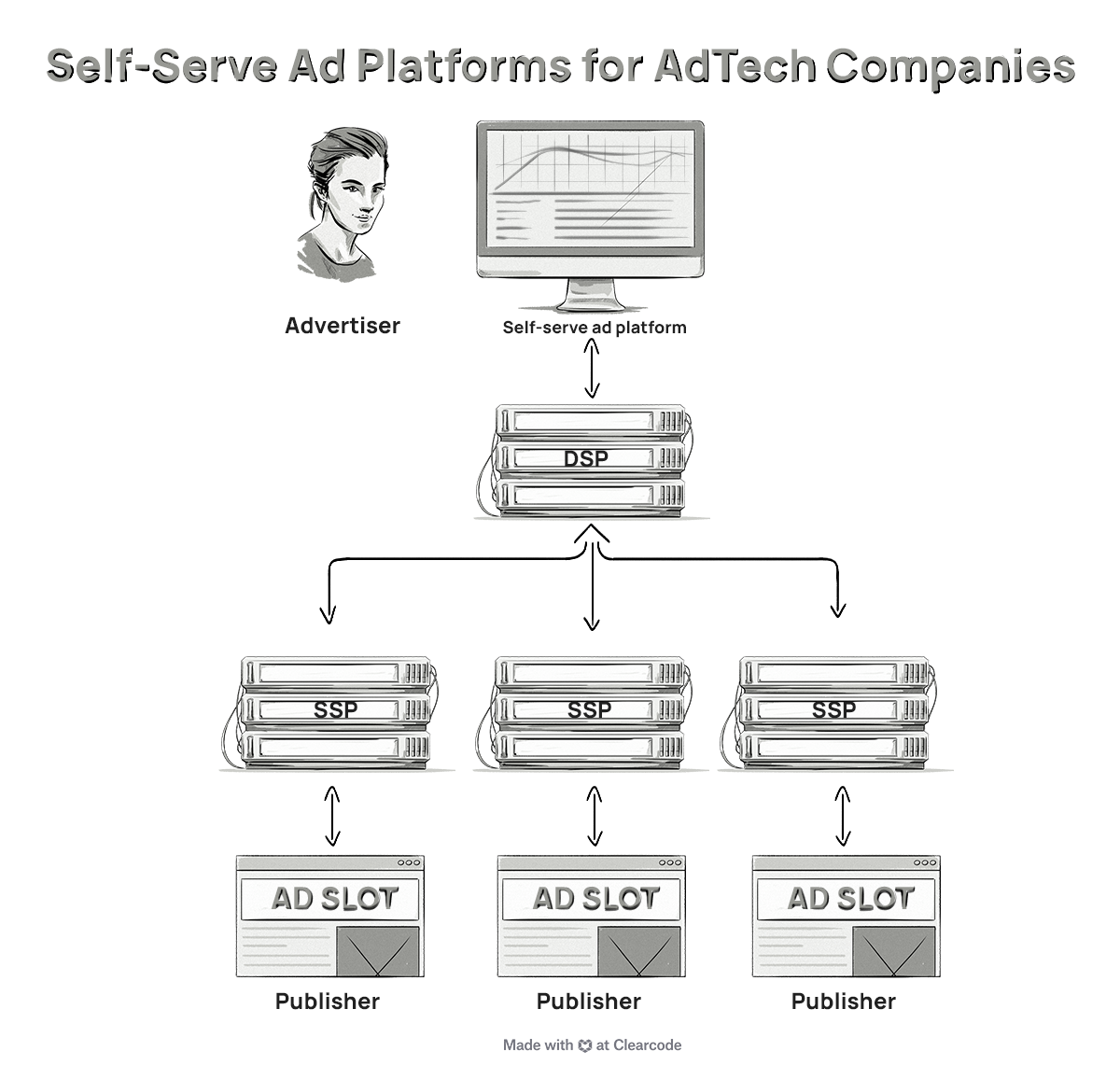
Publishers and Media Companies
Publishers and media companies, e.g. video-streaming companies, can build self-serve ad platforms to allow advertisers and ad agencies to run campaigns that show ads to the publisher’s audience. The self-serve ad platform would typically integrate with data platforms, like a DMP or CDP, to allow advertisers to create audiences, and with an AdTech platform, such as an ad server, to power ad delivery and targeting.
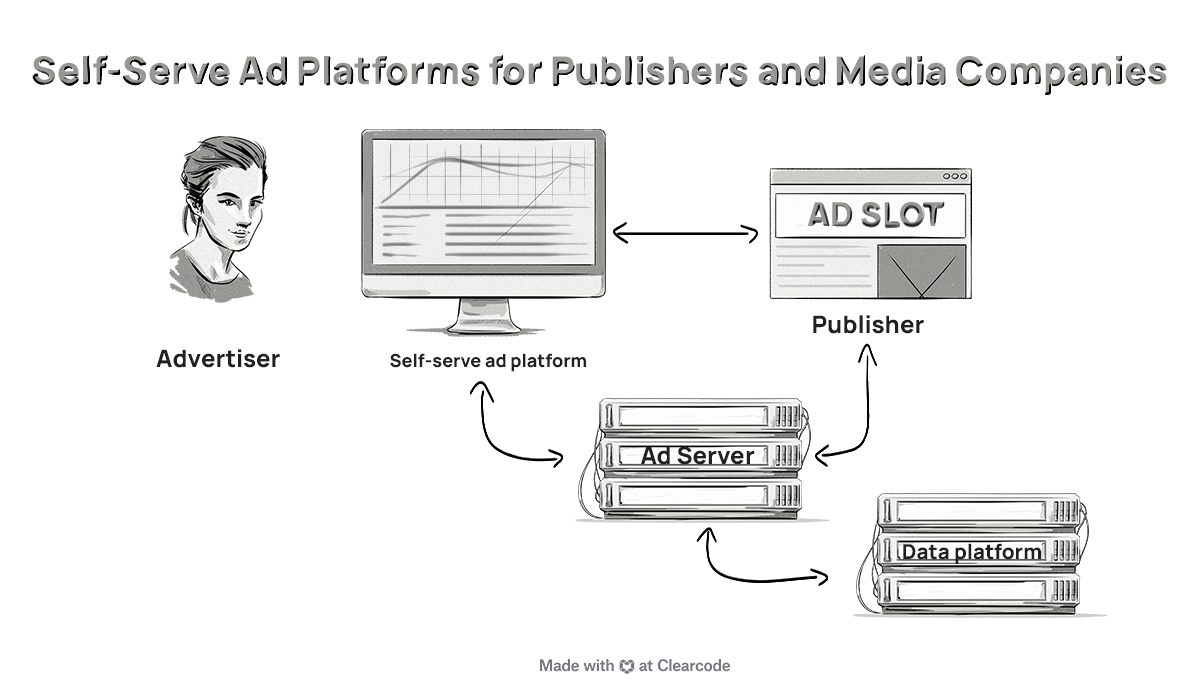
Advertising Agencies
Advertising agencies that run campaigns for their advertising clients can build a self-serve ad platform to allow their clients to create campaigns that can then be run across multiple demand-side platforms.
Ad agencies can also build reporting dashboards inside the self-serve ad platform to display metrics about the performance of the advertising campaigns across the different DSPs.

The Key Features of a Self-Serve Ad Platform
While every self-serve ad platform is different, they all need to have some key features.
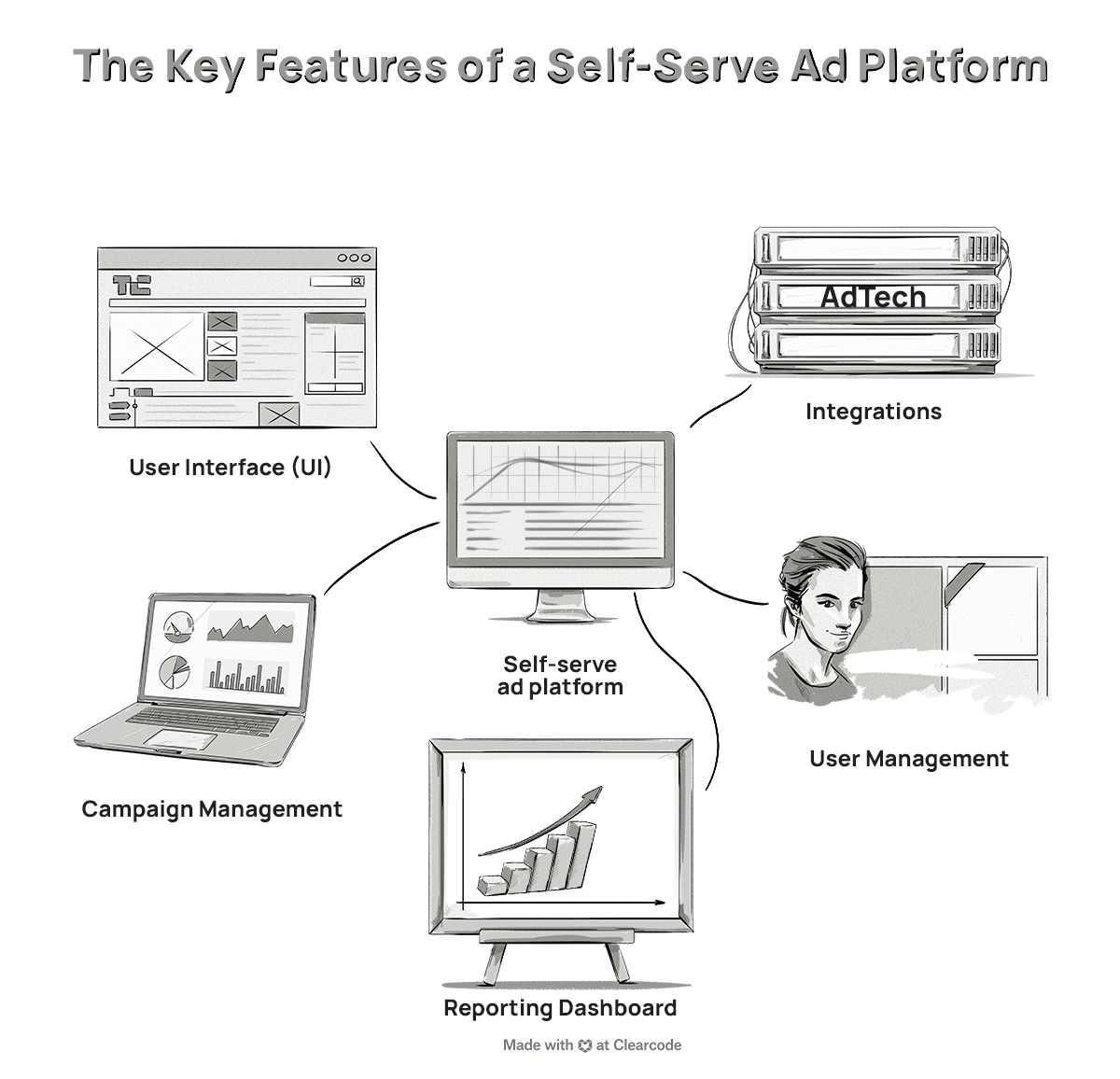
User Interface (UI)
The UI allows both the company (e.g. DSP, publisher or ad agency) and its clients to manage every aspect of campaigns, as well as user management and integrations.
Campaign Management
This part of the self-serve ad platform is responsible for creating, launching and changing the ad campaigns. The campaign management component will often allow users to define the ad format (e.g. text, native, and video), ad placement, start and finish dates, location targeting, and other targeting parameters.
Reporting Dashboard
This component allows users to view the performance metrics of the different advertising campaigns. The reporting dashboard can include key metrics such as impressions, clicks, conversions and their respective rates (e.g. click-through and conversion rates), as well as dimensions such as location, device type, ad format, ad size etc.
User Management
This component allows users to create and remove users, as well as restrict access to certain parts of the self-serve ad platform.
Integrations
Another key element of a self-serve ad platform are integrations.
Depending on the situation, these integrations can be with AdTech platforms (e.g. DSPs, SSPs, ad networks and ad servers) and data platforms, such as DMPs and CDPs.
Integrating the self-serve ad platform with AdTech platforms is needed to run the campaigns, whereas the integrations with the data platforms are needed to show ads to certain audiences, for example, in the case when a publisher builds a self-serve ad platform to allow advertisers to show ads to its audience.
The Benefits of Building vs Renting a Self-Serve Ad Platform
There are both advantages and disadvantages to building your own self-serve ad platform versus renting an existing one and companies need to consider these factors before making a decision.
Advantages of Building a Self-Serve Ad Platform
- 100% ownership of the tech, IP, codebase and data.
- Full control of the product roadmap.
- The ability to create custom features and integrations.
Best suited for:
- AdTech companies.
- Large publishers and media companies.
- Medium- to large-size ad agencies.
Advantages of Renting a Self-Serve Ad Platform
- The ability to start running campaigns straightaway.
- Lower ongoing costs.
- No technical maintenance of the self-serve ad platform.
Best suited for:
- Small AdTech companies and startups to validate the business idea.
- Small publishers and media companies.
- Small ad agencies.
How To Build a Self-Serve Advertising Platform
Building a self-serve ad platform is just like another software development project.
Below are the different phases of our development process that we use here at Clearcode to build self-serve ad platforms and other AdTech & MarTech platforms.
Discovery
This phase includes:
- Understanding the goals, vision, and context of your project.
- Identifying your project’s initial requirements and possible technical challenges.
- Answering the various technical questions that arise during this phase.
Sprint 0
This phase includes:
- Identifying the technical unknowns of the project and looking for possible solutions.
- Selecting the features for the MVP and creating a list of user stories (tasks) that will create and shape the product backlog.
- Research the optimum tech stack and infrastructure architecture for the project.
- Conducting research for MVP development or PoC development.
MVP Development
This phase includes:
- Building your project’s MVP — including frontend, backend and infrastructure development, UX/UI design, and QA and testing.
- Launching your MVP to initial users or stakeholders.
- Starting to gather feedback for the Post-MVP Development phase.
- Monitoring the platform and responding to emergencies.
Post-MVP Development and Maintenance
This phase includes:
- Continuing the development of the platform via our agile development process (2-week sprints) and aiming to provide new or improved features at the end of each sprint.
- Providing ongoing support and maintenance of the software and infrastructure.
- Handing the project over to your internal team (if applicable).
Examples of Self-Serve Advertising Platforms that Clearcode has Built
Over the years, the AdTech & MarTech development teams at Clearode have built multiple self-serve ad platforms for AdTech companies, publishers, media companies, and ad agencies.
Below are some of the main self-serve ad platform development projects we’ve worked on.
Self-Serve Ad Platform for an AdTech Company
A leading European AdTech company partnered with us to design and build its self-serve ad platform.
The self-serve ad platform integrates with its DSP and allows its clients (ad agencies and brands) to create their own campaigns, which are then executed in the DSP.
Self-Serve Ad Platform for an OTT Streaming Service
One of Asia’s biggest OTT streaming service companies partnered with us to design and build its self-serve ad platform.
The self-serve ad platform allows advertisers to create ad campaigns and show ads to viewers watching programs on the video-streaming platform.
Self-Serve Ad Platform for Digital Advertising Agency
A US-based digital advertising agency partnered with us to design and build its self-serve ad platform.
The self-serve ad platform allows advertisers to create campaigns and display ads to users across multiple publishers.
We Can Help You Build a Self-Serve Ad Platform
Our AdTech development teams can work with you to design, build, and maintain a custom-built self-serve ad platform for any programmatic advertising channel.
